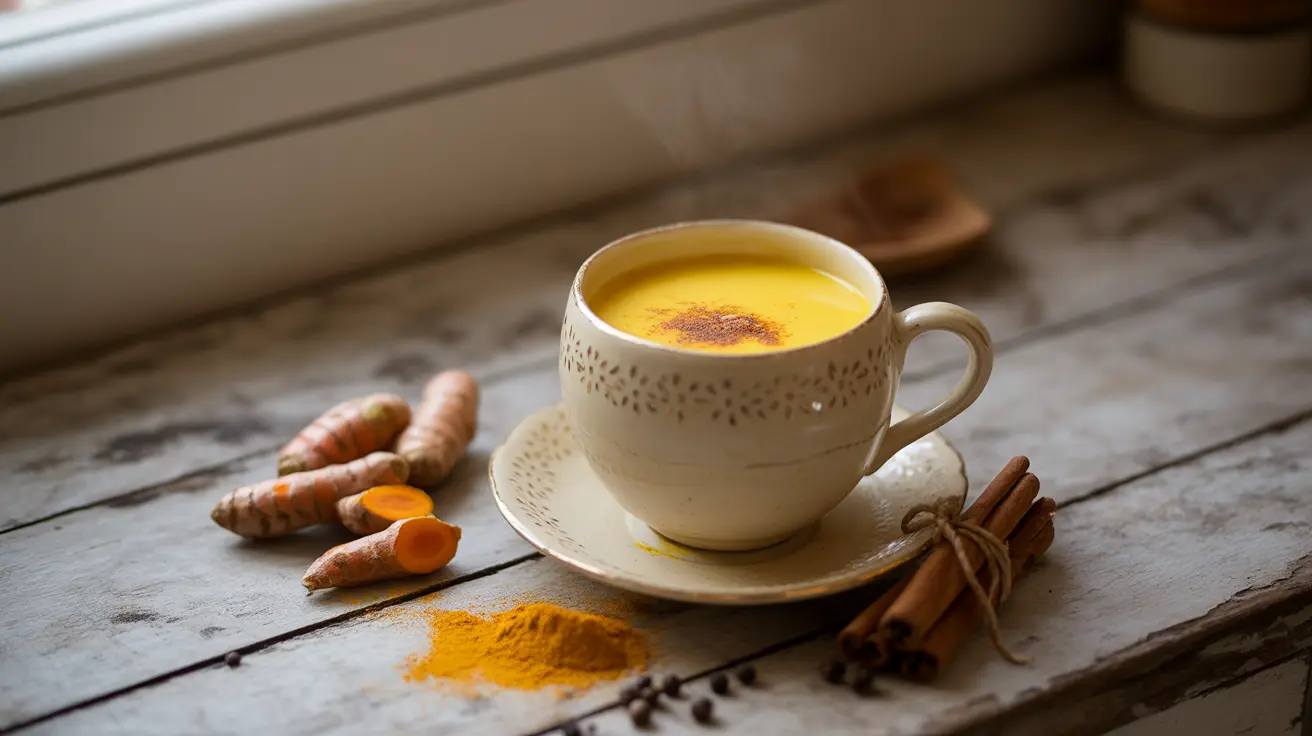Golden milk, also known as haldi doodh in India, is a traditional Ayurvedic beverage that has gained worldwide recognition for its potential health benefits and rich cultural heritage. This warming drink, which combines turmeric with milk and other spices, has been used for centuries in Indian households as both a wellness tonic and a comforting remedy.
While modern wellness culture has recently embraced this golden elixir, its roots run deep in Indian tradition, where it has been passed down through generations as a healing beverage. Understanding its authentic origins and traditional preparation methods can help us appreciate both its cultural significance and therapeutic potential.
The Ancient Origins of Golden Milk
Golden milk's history is deeply intertwined with Ayurvedic medicine, India's traditional healing system that dates back over 3,000 years. In Sanskrit texts, this nourishing drink was prescribed for various ailments and as a general immune system booster. The original recipe, known as haldi doodh, was crafted using fresh turmeric root, whole milk, and carefully selected warming spices.
Traditionally, Indian households would prepare this drink using local, fresh ingredients. The process involved grinding fresh turmeric root with other spices like black pepper, which enhances turmeric's bioavailability, and ginger, which adds additional therapeutic properties.
Traditional Preparation Methods
The authentic preparation of golden milk follows specific guidelines that maximize its beneficial properties:
- Fresh turmeric root or high-quality powder
- Whole milk (traditionally cow's or buffalo milk)
- Black pepper for enhanced absorption
- Additional spices like cardamom, cinnamon, and ginger
- Natural sweeteners such as honey or jaggery (optional)
The traditional method involves warming the milk slowly and incorporating the spices gradually to allow their properties to infuse properly. This careful preparation ensures both optimal taste and therapeutic benefits.
Cultural Significance and Wellness Properties
In Indian culture, golden milk is more than just a trendy beverage – it's a ritual of wellness and care. Traditionally, it was served to:
- Support immune system function
- Aid in recovery from illness
- Promote restful sleep
- Soothe joint discomfort
- Support respiratory health
The practice of drinking golden milk often accompanies other wellness routines, such as yoga and meditation, forming part of a holistic approach to health maintenance.
Modern Adaptations and Global Popularity
As golden milk has gained international attention, numerous variations have emerged. Modern versions often include:
- Plant-based milk alternatives
- Pre-made spice blends
- Concentrated turmeric pastes
- Added superfoods and adaptogens
While these adaptations make the drink more accessible to global consumers, they sometimes diverge significantly from the traditional preparation methods and cultural context.
Frequently Asked Questions
What is the origin of golden milk and how is it traditionally made in India? Golden milk originates from ancient Ayurvedic practices in India, where it's known as haldi doodh. It's traditionally made by combining fresh turmeric root with warm milk, black pepper, and other warming spices, following specific preparation methods to maximize its therapeutic properties.
What are the health benefits of drinking golden milk or haldi doodh according to Ayurvedic medicine? Ayurvedic medicine attributes numerous health benefits to golden milk, including immune system support, anti-inflammatory properties, improved digestion, and enhanced sleep quality. The combination of turmeric with black pepper and warming spices is believed to create a synergistic effect that promotes overall wellness.
How does traditional golden milk differ from modern store-bought turmeric latte blends? Traditional golden milk uses fresh ingredients and follows specific preparation methods, while modern versions often rely on pre-made spice blends, alternative milk bases, and additional ingredients not found in the original recipe. The traditional version emphasizes the quality and proper combination of ingredients over convenience.
Why is turmeric used in golden milk and what role does curcumin play in its health effects? Turmeric is the key ingredient in golden milk due to its active compound curcumin, which has demonstrated anti-inflammatory and antioxidant properties. Black pepper is traditionally added because it contains piperine, which significantly increases curcumin's bioavailability.
How did golden milk become popular in the West and what is lost in the cultural adaptation? Golden milk gained Western popularity through the wellness movement, but often with simplified preparations and removed cultural context. The commercialization has sometimes led to the loss of traditional preparation methods, authentic ingredients, and the deeper cultural and spiritual significance of the beverage in Indian tradition.




